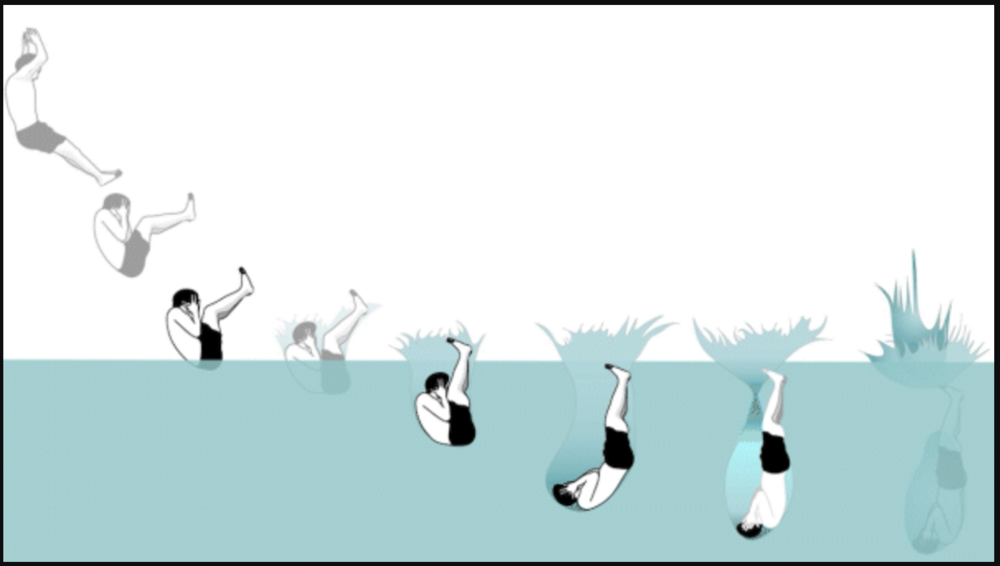Caption
Researchers at Georgia Tech studied the fluid dynamics of water in pool dives.
GPB's Amanda Andrews reports on the new study from Georgia Tech.
Researchers at Georgia Tech studied the fluid dynamics of water in pool dives.
Researchers at Georgia Tech studied the most effective way for pool divers to make a big splash this summer.
Scientists went to New Zealand to study the Manu jump of the Māori people. The traditional jump instructs divers to hit the water in a V shape then quickly straighten out underwater to make a huge splash.
Postdoctoral fellow Pankaj Rohilla said water acts like a trampoline during the dives.
“More deformation you cause, the more higher it will go,” Rohilla said. “Like basically stretching the water surface as much as you can. That way you store a lot of energy in water and the water will be going up. The cavity collapses, it creates a splash.”
The research team used a robot to test different dive angles and opening speeds for maximum splash size.

A diagram demonstrating proper form to create a large splash doing the Manu Jump.
Postdoctoral researcher Daehyun Choi helped create the robot for the study based on videos of the Manu jump.
“How they hit the water is less crucial than what they do immediately afterward,” Choi said.
The data shows entering the water in a 45 degree V shape and opening within .3 seconds gives the largest splash. The research was conducted by observing hours of video of Māori athletes and published in the journal Interface Focus.